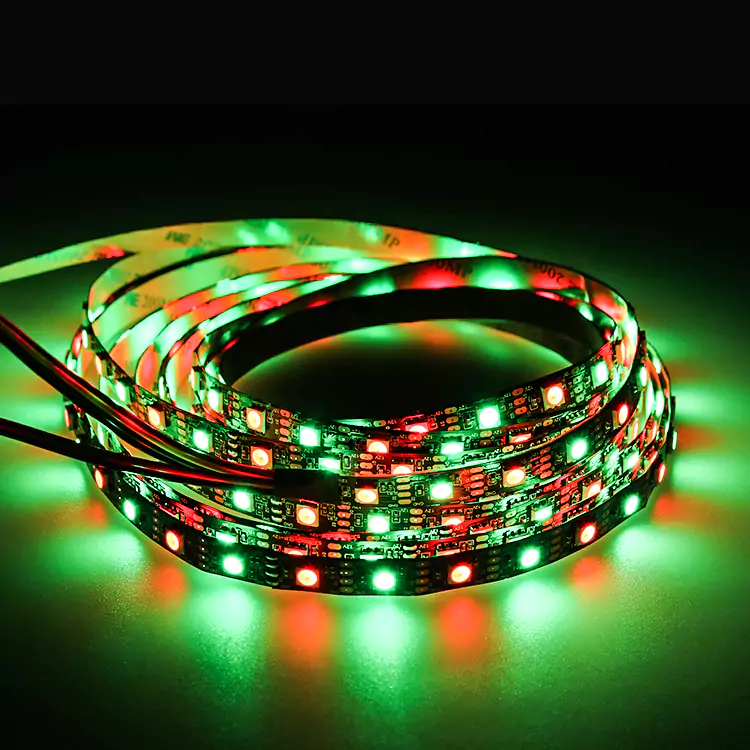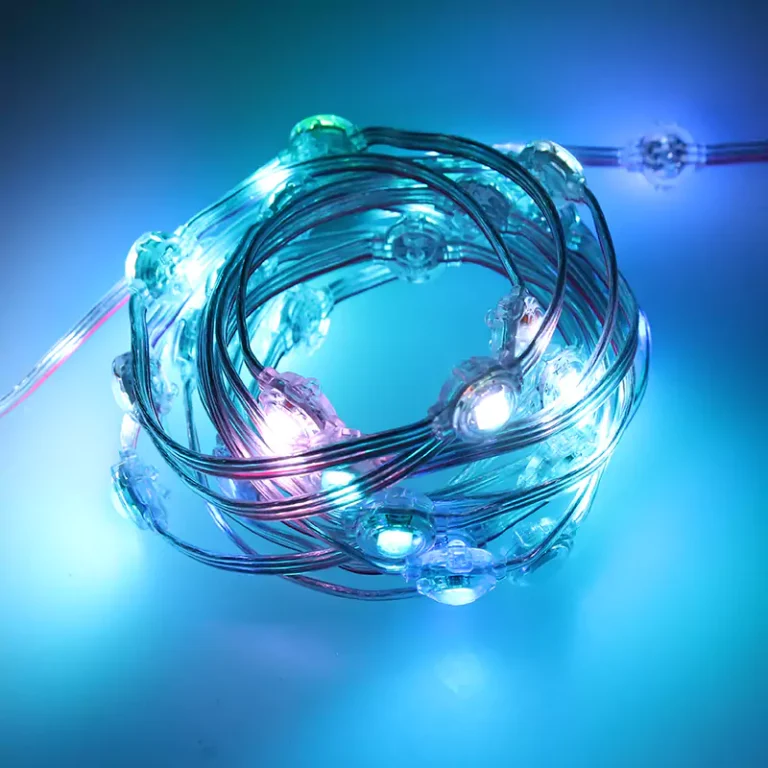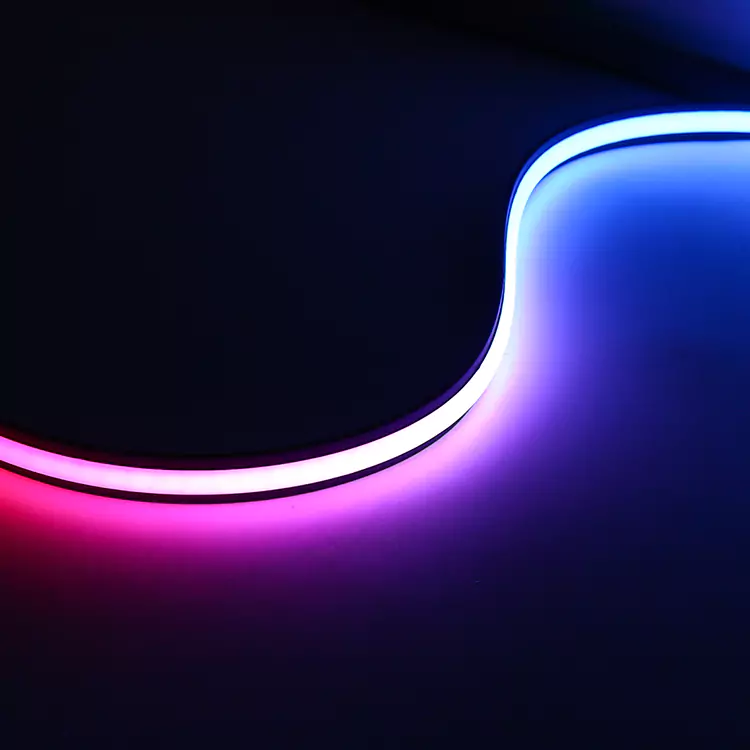Understanding Pixel Light Technology
The concept of pixel light technology has revolutionized the way we approach illumination in various settings. By using arrays of light-emitting diodes (LEDs) that can be individually controlled, pixel light systems provide unprecedented flexibility and creativity in lighting design. This advanced technology allows for dynamic light displays, color mixing, and enhanced visual effects, which are increasingly popular in both commercial and artistic applications. Understanding the mechanisms behind pixel light technology is essential for those interested in harnessing its full potential in their projects.
The Origins and Development of Pixel Lighting
Pixel lighting has its roots in early LED technology, which began as a simple light source in the late 20th century. Over time, researchers and manufacturers recognized the potential of controlling individual LED elements to create complex lighting arrangements. The advent of digital control systems has further propelled this development, enabling precise manipulation of light output for various applications. As pixel lighting gained popularity, advancements in materials and design, such as the integration of flexible circuit boards, contributed to more efficient and versatile lighting solutions known today.
Key Innovations in Pixel Illumination
Key innovations in pixel illumination have transformed its efficacy and application scope. The integration of advanced microcontrollers and sophisticated software allows for the synchronization of lights with sound or other visual media, resulting in immersive experiences for audiences. Additionally, the continued development of high-quality LED bulbs has significantly improved the lifespan and durability of pixel lighting systems. Innovations in heat management technologies and optical design have also led to increased brightness and reduced energy consumption, solidifying pixel lighting’s place in modern illumination strategies.
Role of Shiji Lighting in Pixel Light Advancement
Shiji Lighting has positioned itself as a leader in advancing pixel light technology, contributing cutting-edge solutions to the market. The company’s focus on research and development fuels its ability to innovate in pixel lighting, offering products that emphasize performance and efficiency. By integrating smart technologies into their pixel light systems, Shiji Lighting provides clients with solutions that meet both aesthetic and operational requirements. As a result, the company continues to set benchmarks for illumination quality and energy efficiency.
Illumination Efficiency: A Core Focus
In today’s landscape, illumination efficiency has become a fundamental consideration for any lighting solution. As industries seek to reduce energy consumption and align with sustainability goals, pixel light technology offers unique advantages. By focusing on effective designs and quality materials, pixel lighting can achieve stunning visual results while minimizing environmental impact. The effective management of illumination efficiency not only leads to reduced operational costs but also supports a more sustainable approach to lighting.
Enhancing Brightness with Reduced Energy Consumption
Pixel light systems inherently improve brightness while maintaining low energy consumption. This is largely due to the efficiency of modern LEDs, which emit more light per watt compared to traditional lighting solutions. Shiji Lighting’s commitment to exploring innovative configurations, such as optimized lens designs and advanced heat management, further enhances the brightness and effectiveness of their pixel lighting systems while keeping energy use at a minimum. As a result, clients benefit from illuminating their spaces more efficiently without compromising on quality.
Techniques for Maximizing Illumination Efficiency
Advanced LED Materials
The choice of materials is vital in maximizing illumination efficiency in pixel light solutions. Shiji Lighting utilizes high-quality materials that enhance light output and longevity, contributing to overall system efficiency. Specific advances in LED technology—such as the use of phosphor coatings to improve color rendering and better light diffusion—have led to higher performance levels. By focusing on these advanced materials, pixel lighting systems can operate effectively across various environments, providing consistent results.
Energy-efficient Drivers and Control Systems
Energy-efficient drivers and control systems play a significant role in enhancing the overall performance of pixel light solutions. By modernizing dimming and modulation techniques, these drivers allow for precise control over individual light outputs. This leads to improved energy efficiency, as lights can be fine-tuned to match the desired brightness level without unnecessary power usage. Shiji Lighting emphasizes the integration of these technologies in their products, ensuring that every aspect of lighting control is optimized for performance and sustainability.
Shiji Lighting‘s Commitment to Efficient Illumination
Shiji Lighting’s commitment to efficient illumination extends beyond just product offerings; it is a core value that influences every aspect of their operations. By continuously investing in research and development, the company seeks to push the boundaries of illumination efficiency. Shiji Lighting aims to create systems that not only reduce energy consumption but also provide high performance over extended periods. This dedication to efficiency not only meets industry demands but reinforces the importance of sustainable practices in the field of lighting technology.
Practical Applications of Pixel Lights
Architectural and Artistic Installations
Integrating Pixel Lights with Modern Architecture
The integration of pixel lights into modern architecture offers architects and designers an opportunity to elevate the aesthetic appeal of buildings significantly. These lights can be seamlessly incorporated into facades, providing dynamic illumination that enhances the architectural forms and textures. By using pixel lights, architects can create stunning visual narratives that shift with perspectives, making buildings appear alive and engaging at night. Additionally, pixel technology allows for customization in color palettes and lighting patterns, enabling architects to align the illumination with the building’s purpose and the surrounding environment.
Enhancing Art Exhibits with Dynamic Lighting Solutions
Art exhibitions have embraced pixel light technology to create captivating displays that enhance the viewer’s experience. The ability to control each pixel separately positions artists to manipulate light and color in innovative ways, adding depth and dimension to their work. This dynamic lighting transforms static exhibits into immersive experiences, influencing the audience’s mood and perception. Moreover, pixel lights can synchronize with sound and motion to provide a multi-sensory experience, further enriching the artistic narrative and making each exhibit unique to its setting.
Consumer Electronics and Smart Homes
High-definition Displays Utilizing Pixel Lights
Consumer electronics have significantly benefited from pixel light technology, primarily seen in high-definition displays such as televisions and monitors. The use of pixel lights allows for superior image quality, with vibrant colors and deeper contrasts, enhancing the viewing experience. With advancements in pixel density and LED technology, manufacturers can produce thinner, lighter displays that maintain high performance without sacrificing size or resolution. This capability is crucial in a marketplace driven by the demand for immersive viewing and seamless connectivity in smart homes.
Smart Lighting Systems in Residential Spaces
Smart homes are increasingly adopting pixel lighting to enhance user convenience and energy efficiency. These systems can be controlled via smartphones or smart assistants, allowing users to change colors, brightness, and lighting moods at their convenience. Additionally, pixel-lighting solutions integrate with various home automation systems, allowing for routine schedules and energy-efficient practices that adapt to the user’s lifestyle. As such, digital lights not only improves the aesthetic and functional aspects of a home but also plays a vital role in sustainability and energy conservation.
Challenges in Pixel Light Development
Addressing Heat Dissipation Issues
One of the primary challenges facing pixel light technology is efficiently managing heat dissipation. As pixel lights are typically used in high-density configurations, the thermal management system must effectively dissipate heat generated during operation to maintain performance and longevity. Poor heat dissipation can lead to reduced brightness, color shifting, and decreased lifespan of LED components. To address this issue, manufacturers focus on integrating advanced cooling solutions, such as heat sinks and thermal pads, that enhance airflow and help maintain optimal operating temperatures.
Ensuring Longevity and Durability
Ensuring the longevity and durability of pixel lighting components is another critical challenge. Environments such as outdoor installations or high-traffic areas require lights that can withstand harsh conditions while maintaining performance. Factors like moisture, temperature fluctuations, and mechanical stress can impair lighting systems over time. Manufacturers address these concerns by employing robust materials and protective coatings that enhance durability, as well as conducting rigorous testing to meet industry standards for longevity.
Maintaining Consistency in Light Quality
Maintaining consistency in light quality across various pixel lighting installations proves to be a significant obstacle for developers. Variations in color temperature, brightness, and LED performance can lead to discrepancies that detract from the desired visual effect. To combat this issue, manufacturers prioritize using high-quality LED components and implement stringent quality control measures throughout the production process. Moreover, advancements in calibration technologies allow for precise adjustments to achieve a uniform light output, ensuring that installations meet the high standards expected by clients and audiences alike.
Shiji Lighting’s Innovative Solutions
Product Overview: Unique Features and Benefits
Shiji Lighting continues to push the boundaries of what pixel light technology can achieve through their innovative product offerings. Each product is designed with unique features that cater to a diverse range of applications while ensuring high performance. One notable aspect of their pixel lights is the customizable lighting designs that allow users to adapt the lighting to specific atmospheres or events. With programmable features, these custom lights can transform any environment, creating engaging visual experiences tailored to users’ needs and preferences.
In addition to flexibility, Shiji Lighting places a strong emphasis on durability and efficiency. Their pixel lights are crafted using high-quality materials that withstand harsh conditions, ensuring a long lifespan and reliable performance. This durability is particularly beneficial in outdoor installations where environmental challenges may impact the lighting system. Furthermore, the integration of advanced energy-efficient technologies not only enhances illumination efficiency but also helps customers reduce their energy consumption and operating costs.
Customer-Centric Approach in Product Development
At the heart of Shiji Lighting‘s product development strategy is a commitment to a customer-centric approach. They actively involve customers in the design process, gathering feedback that directly influences product features and functionality. This approach allows Shiji Lighting to create solutions that meet the diverse needs of their clientele, while also encouraging innovation and responsiveness to market trends.
Shiji Lighting’s relentless focus on customer satisfaction is exemplified in their tailored support and consultation services. This ensures that clients receive guidance on how to best implement pixel light solutions in various applications, be it architectural projects, art installations, or consumer electronics. By prioritizing customer needs, Shiji Lighting positions itself as a preferred partner in the evolution of pixel light technology.
Future Trends in Pixel Light Technology
Potential Breakthroughs on the Horizon
As pixel light technology continues to evolve, several potential breakthroughs are on the horizon that could significantly enhance its effectiveness. One area of focus is the integration of artificial intelligence and machine learning capabilities into pixel light systems. This could pave the way for adaptive lighting solutions that adjust dynamically to environmental changes and user behavior, thereby improving overall user experience and energy savings.
Additionally, advancements in organic light-emitting diodes (OLEDs) may revolutionize pixel lighting by offering even greater color fidelity, thinner designs, and potentially more eco-friendly manufacturing processes. As these technologies converge, we can expect pixel lights to become increasingly versatile, catering to not just traditional lighting needs but also new domains such as health and wellness applications, where lighting can positively influence biological rhythms and energy.
Emerging Markets and Expansion Possibilities
With the growing awareness of sustainability and energy efficiency, emerging markets present significant expansion possibilities for pixel light technology. As countries invest in greener solutions, the demand for innovative lighting systems that minimize energy consumption is also rising. Shiji Lighting is well-positioned to capture this growing market by offering advanced products that align with environmental goals while also providing aesthetic benefits.
Additionally, the trend towards smart homes and cities is creating exciting opportunities for the integration of pixel lighting into urban infrastructure. Investment in smart lighting solutions that enhance both functionality and aesthetics is expected to grow, and Shiji Lighting is set to be at the forefront of this movement, providing solutions that integrate seamlessly into the broader context of smart architecture and urban planning.
Shiji Lighting‘s Vision for Future Developments
Shiji Lighting envisions a future where pixel light technology realizes its full potential—driving both innovation and sustainability. The company is committed to continuing its investment in research and development, particularly in the areas of material science and smart technologies. By exploring innovative methods of improving illumination efficiency and introducing fresh design paradigms, Shiji Lighting aims to remain competitive in a swiftly evolving market.
Furthermore, they intend to expand their global reach through strategic partnerships and collaborations with industry stakeholders. By working closely with architects, designers, and developers, Shiji Lighting seeks to foster an ecosystem that encourages creativity and progressive lighting solutions. Through these efforts, the company aspires to lead the charge in the future of pixel light technology, solidifying its role as a pioneer in this dynamic field.



